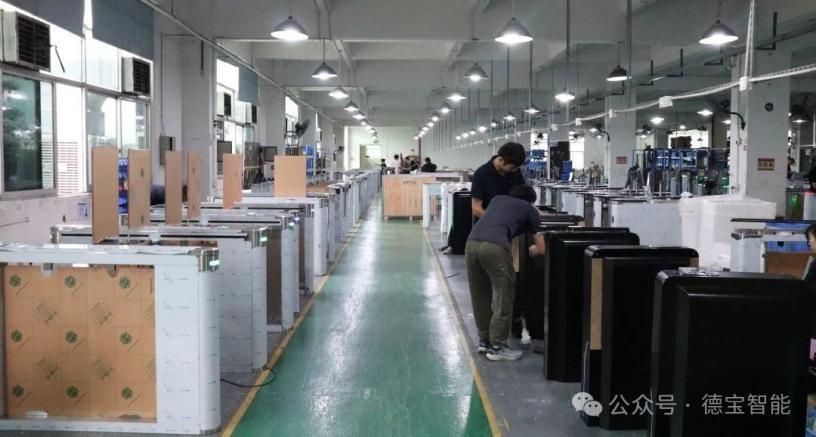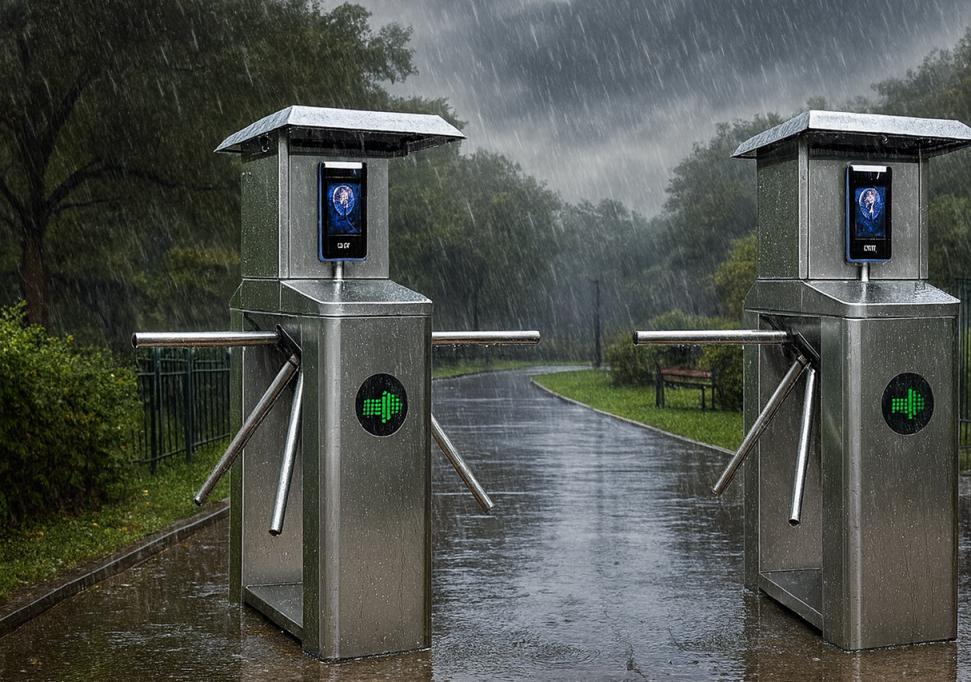Durability Testing for High-Traffic Flap Barrier Installations


Flap barriers are essential in controlling access to buildings, stations, and other secure zones—but in high-traffic areas, they face continuous physical demands. If a barrier breaks down during peak hours, it doesn’t just interrupt flow—it undermines security and can cause safety issues. That’s why performing a proper flap barrier durability test is more than just a precaution—it’s a critical part of long-term system success.
Imagine catching a stress crack in the flap material or identifying a weakening motor before it fails during operation. Durability testing helps facilities prevent breakdowns, reduce costs, and guarantee uninterrupted access control. This guide provides facility managers, engineers, and maintenance teams with practical strategies to conduct thorough durability evaluations and keep their access systems strong and secure.
Why Durability Matters in High-Traffic Areas
Preventing Unexpected Failures
High-traffic environments—think metro stations, airports, and office buildings—put constant strain on flap barriers. These barriers cycle hundreds, sometimes thousands, of times per day. Without routine durability testing, these repeated movements can lead to sudden breakdowns, trapping users or allowing unmonitored access. Failures not only frustrate users but often force security personnel to override the system, compromising controlled access.
Testing durability helps identify weak components early—whether it’s a loosening hinge, a motor nearing burnout, or a sensor struggling to maintain accuracy. Regular assessments create a buffer against the unexpected and keep the security flow moving seamlessly.
Protecting Security and Safety
Every time a flap barrier cycles, it does more than just open and close—it enforces your access policy. If that function is compromised by wear, delayed movement, or sensor failure, your facility becomes vulnerable. Imagine a flap closing too slowly or failing to detect a tailgater—this could allow unauthorized access, putting people and property at risk.
Safety is just as important. Overused or poorly maintained barriers can close too quickly or jam mid-cycle, potentially injuring users. A reliable flap barrier durability test can expose these risks before they become liabilities. In some settings, especially those involving children, elderly, or disabled individuals, safety-focused testing is a compliance requirement—not a luxury.
Reducing Long-Term Operational Costs
Every facility operates under budget constraints, making cost-effective maintenance strategies essential. Investing time in structured durability testing can prevent major repair bills. Replacing a flap arm before it breaks is far cheaper than replacing the motor after it burns out. By measuring wear and identifying strain points early, your team can schedule predictive maintenance instead of reacting to emergencies.
Durability assessments also help extend the life of the system. Instead of replacing the entire unit prematurely, data from your tests can guide targeted upgrades—like switching to reinforced flaps or updating motor firmware. Over time, this reduces the cost per cycle and improves overall return on investment.
Key Durability Factors for Flap Barriers
Material Strength and Fatigue Resistance
The longevity of any flap barrier begins with its construction. The most commonly used materials for flap arms include acrylic, polycarbonate, and tempered glass. These must endure daily impacts and resist cracking, warping, or discoloration. During a flap barrier durability test, focus on how well these materials handle repeated stress—especially at pivot points and contact zones.
For high-traffic zones, polycarbonate is often preferred due to its impact resistance and flexibility. However, material fatigue still occurs over time, particularly if flaps are consistently hit by luggage, bags, or aggressive users. Look for early signs like microfractures, edge chipping, or color changes, which indicate structural weakening.
Motor and Mechanism Endurance
At the heart of every barrier is its drive mechanism—usually powered by a DC or brushless motor. These motors are designed for repeated operation, but over time, components such as bearings, belts, and gears wear down. Your durability test should examine the consistency of movement, noise levels, and heat buildup during continuous cycling.
Listen for changes in motor sound. A grinding or humming noise might suggest internal wear. Excessive heat after multiple cycles may point to an overloaded system. Some systems include built-in sensors that alert you to these changes; if yours doesn’t, manual testing and temperature checks become vital.
Regular wear of these mechanical parts is normal, but without proper testing, signs of failure may be missed—resulting in avoidable damage or system shutdown.
Sensor Reliability and Flap Movement Precision
Durability isn’t just about hardware—it also depends on electronics. Sensors determine when to open, how fast to close, and whether a user is still in the passageway. In high-traffic environments, sensors must work with split-second accuracy despite vibration, dust, or lighting changes.
Over time, infrared or laser sensors can lose calibration or degrade due to exposure. A thorough durability check includes verifying sensor range, response time, and coordination with the motor. It’s important that sensor alignment remains stable—even after thousands of cycles.
Precision in flap movement is also critical. A barrier that opens too wide or closes off-center may indicate wear in its guiding mechanism. Tracking these inconsistencies helps teams decide when realignment or component replacement is necessary.
Types of Flap Barrier Durability Tests
Cycle Life Testing
Cycle life testing is the most fundamental flap barrier durability test and simulates long-term use by repeatedly opening and closing the flap barrier over a large number of cycles—typically ranging from 1 million to 10 million or more, depending on the application. This method helps determine how long a flap barrier can perform without mechanical failure under standard operating conditions.
To conduct this test, automated tools or manual operation are used to initiate repeated cycles in a controlled setting. During the test, engineers monitor critical metrics such as:
- Cycle speed consistency
- Motor performance over time
- Degradation in flap alignment or arm flexibility
- Electronic response accuracy
Cycle tests are most useful when performed before large-scale deployment or during routine durability checks in high-usage facilities. Any deviation in timing, response, or alignment may signal wear on internal parts or the beginning of structural fatigue.
Load and Impact Resistance Testing
High-traffic flap barriers often encounter unintentional impacts from briefcase corners, strollers, luggage, or even hurried commuters. Load and impact resistance testing determines how the flaps respond to this everyday abuse. These tests simulate sudden force or continuous load on the flap material and hinges.
This kind of durability test typically involves:
- Repeated lateral impacts using weighted pendulums or mechanical arms
- Pressure application on static flaps to check for deflection or cracks
- Analysis of hinge integrity and frame stress distribution
Barrier manufacturers often list load limits in their technical specifications. However, actual resistance should be verified onsite, particularly in environments where vandalism or misuse is more likely. If cracking, bending, or noise occurs during these simulations, the material may be unfit for extended service in harsh use conditions.
Environmental Resistance Tests
While mechanical durability is crucial, a complete flap barrier durability test must also account for environmental factors. Changes in temperature, humidity, and exposure to dust or moisture can affect both electronic and mechanical parts. In outdoor or semi-covered installations, this kind of stress testing is non-negotiable.
Environmental resistance tests assess:
- Flap movement under temperature extremes (e.g., -10°C to +50°C)
- Motor and sensor responsiveness after moisture exposure
- Corrosion resistance of frame and fasteners
According to ASTM durability tests, environmental simulation chambers are often used to expose barriers to rapid temperature fluctuations, UV light, and high humidity. These conditions accelerate wear and highlight vulnerabilities like rust-prone fasteners, failing seals, or motor lag due to cold temperatures.
If these environmental concerns aren’t factored in, you may find that a barrier that performs well indoors quickly deteriorates when moved outdoors—even with protective housing.
Step-by-Step Flap Barrier Durability Test Process
Planning and Setup for On-Site Testing
Before beginning a flap barrier durability test, define clear objectives and gather necessary tools. Decide what durability factors you’re testing—mechanical cycles, environmental stress, or impact tolerance. Outline the number of test cycles, conditions for pass/fail, and acceptable performance thresholds based on manufacturer specifications and real-world usage.
Typical tools and preparations include:
- A stopwatch or timing software to track cycle times
- A test counter to record operations (many systems have this built-in)
- A thermometer or IR sensor to monitor motor temperature
- Manual or pneumatic impact tools for resistance tests
Testing should occur during off-peak hours or in a controlled environment to minimize safety risks. Inform security staff or users of potential downtime and ensure you have immediate access to power shutoff switches and manual overrides.
Executing Operational Cycle Tests
Once the setup is complete, begin the operational cycle test by activating the barrier through standard user inputs such as RFID cards, biometric readers, or push buttons. Let the barrier run for a predetermined number of cycles (e.g., 5,000 or 10,000), pausing intermittently to observe performance.
Key points to record during testing include:
- Flap alignment at rest and during motion
- Opening and closing time for each cycle
- Any unusual noises, such as grinding or buzzing
- Temperature increase at motor housing
Even minor changes—like flaps not meeting perfectly or flaps hesitating mid-motion—can indicate the early stages of wear. Use high-speed cameras or motion sensors if available, especially for precise timing comparisons.
If errors occur (e.g., access granted but flap doesn’t move), investigate signal and control board integrity before continuing testing. Mechanical issues should be logged and marked for follow-up maintenance.
Measuring Resistance to Mechanical Stress
After testing basic motion durability, simulate mechanical abuse to determine the barrier’s threshold for physical impact. This is especially important for high-traffic environments prone to occasional misuse. Use soft mallets, weighted bags, or simulated body pressure to test how the flaps and hinges respond to force.
Observe for:
- Immediate damage or deflection of the flap
- Play in hinges or loosening of the flap arm
- Deviation from original flap position post-impact
Even if visible damage doesn’t occur, repeated impacts can misalign internal gearing or loosen motor mounts. Monitor for changes in flap movement speed or noise post-impact. If performance degrades, you’ll know the barrier is not suited for high-abuse locations without reinforcement or extra protections.
Analyzing Results Against Standards and Claims
Understanding Industry Norms and Benchmarks
After conducting your flap barrier durability test, the next step is to compare your findings to accepted industry benchmarks. Leading durability standards—such as those defined by ISO and ASTM—outline acceptable tolerance levels for mechanical wear, alignment deviation, and electronic response times.
For example, many ISO standards suggest a mean time between failures (MTBF) of over 1 million cycles for security barrier systems in public environments. If your test results fall short, the barrier may not be rated for high-traffic use—or the installation method may be contributing to faster wear.
Always reference these norms during procurement decisions, quality audits, and performance reviews.Interpreting Data vs. Manufacturer Specifications
One of the most practical steps in any flap barrier durability test is interpreting your real-world results in light of what the manufacturer claims. Technical datasheets usually include performance indicators such as:
- Expected lifespan in number of cycles
- Operating temperature ranges
- Reaction time to valid entries
- Maximum load capacity or impact resistance rating
Compare these specs to your test outcomes. Did the flap operate slower than specified? Did the system heat beyond acceptable levels under normal usage? Are there signs of wear that appeared far earlier than the spec sheet suggests?
If discrepancies arise, it’s crucial to identify whether they result from installation conditions, component quality, or unrealistic marketing claims. For example, if a barrier promises 10 million cycles but exhibits visible fatigue at 500,000, it might not be suitable for your environment. On the other hand, exceptional performance beyond spec is an indicator of product quality and a valuable point in future procurement discussions.
Using Third-Party Testing Resources
For mission-critical environments like airports or secure labs, independent verification can strengthen the credibility of your assessment. Third-party testing labs follow recognized standards, use precision instruments, and provide impartial analysis that can validate or challenge manufacturer claims.
Services from certified labs often include:
- Controlled temperature/humidity cycling
- Load testing under standardized conditions
- Failure analysis and component diagnostics
- Certification documents for compliance audits
Partnering with a third-party testing agency also supports warranty disputes, insurance claims, and vendor accountability. If your internal test results highlight concerns, a formal durability test by an outside expert adds credibility and legal protection.
Maintenance Insights from Durability Testing
Identifying Wear Points
Durability tests don’t just measure endurance—they pinpoint the exact areas where wear occurs most frequently. Flap hinges, motor gearboxes, control cables, and sensor brackets are typical high-wear components in high-use settings. Regular inspections and preventive replacements of these parts can delay costly system-wide failures.
Once wear points are identified, use them to modify your maintenance checklists. Instead of treating every part equally, focus efforts where they’re most needed, increasing system uptime and reducing maintenance costs.
For example, if testing reveals that the right-hand flap hinge loosens after 100,000 cycles, it makes sense to inspect or tighten that component at 80,000 cycles—before it causes performance issues or safety concerns.
Adjusting Maintenance Frequency
A successful flap barrier durability test reveals not just if your barrier will fail—but when. With this data in hand, you can refine your maintenance schedules from generic intervals (like monthly or quarterly) to data-driven intervals based on real stress patterns.
In some facilities, certain lanes may experience more traffic than others due to placement or user habits. Durability data can reveal that while Lane A needs monthly maintenance, Lane B may perform well with bi-monthly checks. This targeted strategy saves time, lowers labor costs, and ensures resources are applied efficiently.
Your testing results essentially convert your maintenance plan from reactive to predictive.
Scheduling Predictive Repairs
When testing shows that specific components begin to degrade after a certain number of cycles, proactive replacement becomes a smart strategy. Instead of waiting for a hinge to break or a motor to fail mid-operation, schedule replacements just before the average failure point.
This is particularly effective for:
- Motor brushes or sensors with known cycle limits
- Bearings or belts showing signs of vibration or tension loss
- Electronics affected by heat cycling or dust accumulation
Use this information to build a predictive maintenance log, integrated with your facility’s maintenance system or CMMS (Computerized Maintenance Management System). Over time, this leads to fewer breakdowns, more efficient repair workflows, and higher barrier uptime.
Planning Routine Durability Assessments
Setting Assessment Intervals Based on Usage
The frequency of your durability testing depends on usage. In high-traffic zones such as subway stations or event venues, monthly tests may be necessary. In moderate-use areas like school entrances or corporate lobbies, quarterly evaluations might suffice.
Use access logs or system software to track actual usage per lane. Modern flap barriers often include cycle counters or traffic analytics that reveal exact entry volumes. Set threshold-based triggers (e.g., every 100,000 cycles) to initiate a new test round.
This makes your durability assessment program dynamic, adapting to real conditions rather than arbitrary time frames.
Tools and Technology to Support Monitoring
As flap barriers evolve, so does the tech used to monitor them. Some modern units come with built-in diagnostics that flag abnormal operation patterns, part stress, or timing anomalies. If your system supports integration with access control platforms or IoT devices, these can automate much of your durability tracking.
Key technologies include:
- Sensor-driven wear tracking
- Motor RPM and load monitoring
- Integrated cycle counters with alert thresholds
- Cloud-based dashboards for remote monitoring
Combining these tools with manual assessments provides a complete picture of your barrier’s health and performance over time.
Building Durability into the Maintenance Cycle
Make durability testing part of your larger maintenance routine—not a one-time event. Every scheduled maintenance cycle should include a mini durability check, focusing on flap motion, hinge condition, signal timing, and heat output. Use a structured checklist and keep records for every inspection.
Over time, these routine checks evolve into a rich dataset that helps predict future failures and optimize barrier upgrades. In some facilities, this leads to a “smart maintenance” model where repairs are triggered automatically based on performance data—not just calendar dates.
Case Examples of Real-World Durability Testing
High-Security Airport Access Gate
At an international airport, durability testing revealed that a certain model of flap barrier began to slow after 1.2 million cycles—despite being rated for 2 million. Further analysis showed buildup of dust in the motor casing due to inadequate filtration in the surrounding air. A preventive maintenance routine was created to clean and relubricate the motor every 800,000 cycles, extending the barrier’s life while maintaining security uptime.
Commercial Office with Biometric Integration
In a corporate lobby, flap barriers integrated with biometric access saw varying use across lanes. Durability assessments showed that the center lane—used most often—experienced hinge loosening twice as fast as side lanes. Maintenance schedules were updated to include monthly inspections for that lane, avoiding recurring disruptions and ensuring smooth employee access.’
Metro Station Flap Barrier Under Daily Stress
A busy urban metro station used third-party testing to assess flap barrier strength. Load testing and continuous cycle operation exposed that the flaps flexed beyond acceptable tolerances when pushed by hurried passengers. The barrier was later reinforced with a steel-core polycarbonate flap upgrade, significantly increasing impact resistance and durability under daily abuse.
Using Durability Results for Procurement and Upgrades
Evaluating New System Proposals
When it’s time to purchase new flap barriers, insights gained from past flap barrier durability tests can directly influence smarter decisions. Rather than relying solely on manufacturer brochures or generalized claims, use your facility’s historical test data to evaluate whether new systems can truly meet the demands of your environment.
For example, if a previously installed model showed early fatigue under daily cycle stress, you can require that all new proposals demonstrate verified performance under similar or harsher conditions. Request test reports or certificates from third-party labs that show long-term performance consistency, especially in terms of motor lifespan and material resilience.
Procurement decisions based on actual usage profiles and proven durability data lead to higher-performing systems and lower total cost of ownership.
Auditing Current Installations for Weaknesses
Durability testing isn’t just for new equipment—it’s a powerful tool for auditing existing systems. By performing regular tests and comparing results to prior benchmarks, you can pinpoint underperforming units, detect wear patterns, or identify locations with higher-than-average stress levels.
These audits can answer critical questions:
- Are certain barrier models aging faster than others?
- Which installations require reinforcement or relocation?
- Where are unexpected usage spikes accelerating wear?
This audit process not only informs maintenance strategies but also supports capital budgeting for upgrades, retrofits, or replacements, helping facility managers avoid reactive spending.
Making Data-Driven Upgrade Decisions
Durability testing arms you with the facts. If a barrier consistently fails to meet durability expectations despite routine maintenance, it may be time for an upgrade. Data such as repeated component failures, reduced sensor accuracy, or cycle time inconsistencies build a strong case for replacement.
Use this evidence to justify system upgrades to:
- Higher-grade motor systems with increased cycle tolerance
- Stronger materials such as steel-core or reinforced flaps
- Enhanced sensor arrays with better environmental resistance
Data-backed upgrades not only improve system performance but also reassure stakeholders and justify investment decisions to procurement teams or executive leadership.
Industry Standards and Testing Resources
ASTM Durability Test Guidelines
The American Society for Testing and Materials (ASTM) provides widely adopted durability testing frameworks for materials and mechanical systems. While they don’t publish barrier-specific protocols, their mechanical fatigue and environmental resistance standards apply to key components like flap arms and support frames.
Following ASTM’s guidelines ensures consistency in testing conditions and adds credibility to your results, especially in facility audits or vendor negotiations.
ISO Testing Standards for Access Control
The International Organization for Standardization (ISO) maintains standards specifically related to security barriers, including mechanical stress resistance, lifecycle testing, and control system responsiveness.
Key ISO standards relevant to flap barrier testing include:
- ISO/IEC 30136: Access control and system performance
- ISO 20957: General mechanical durability requirements
Referencing these standards helps ensure your testing methodology aligns with global benchmarks and can also guide equipment selection during procurement.
Engaging Independent Testing Labs
If internal testing capacity is limited or if vendor claims require verification, certified testing laboratories offer professional-grade durability evaluations. These labs operate under standardized environments and provide objective analysis using high-precision tools and calibrated equipment.
Independent lab testing is especially valuable when:
- Challenging warranty claims
- Conducting pre-deployment verification
- Comparing multiple vendor products side by side
Their results can be presented during board reviews, audits, or security system certifications, adding a layer of credibility to your assessment process.
Common Pitfalls to Avoid During Durability Testing
Inconsistent Testing Conditions
For durability results to be reliable, the testing conditions must remain consistent. Variables like temperature, cycle intervals, and user simulation methods must be standardized across tests. If one test occurs during high humidity and another in a dry environment, results could differ significantly.
Use environmental controls or detailed logging to ensure consistency, and always note any external factors that may affect the outcomes.
Ignoring Early Failure Indicators
Small signs—such as tiny cracks, slightly slower flap movement, or intermittent sensor misfires—often precede larger failures. Dismissing these during testing can lead to unanticipated breakdowns. Always record even the most minor anomalies and review them during maintenance planning.
It’s often the subtle, overlooked indicators that signal future trouble.
Overlooking Non-Mechanical Components
Durability doesn’t end at motors and flaps. Wires, connectors, logic boards, and sensors also endure stress during daily operations. Cables may wear at connection points, firmware can crash under extended runtime, and sensors may misalign due to vibration.
A thorough flap barrier durability test includes reviewing all electronic and control elements, especially in environments prone to temperature fluctuations or high foot traffic.
Conclusion and Final Thoughts
Durability testing is more than a preventive measure—it’s an operational strategy. In high-traffic environments where reliability is critical, a structured flap barrier durability test ensures your access control system is ready to meet daily demands without compromise. From cycle simulations to impact resistance and environmental checks, thorough testing protects both your infrastructure and your reputation.
By integrating durability assessments into your maintenance routine, you reduce downtime, improve system longevity, and make data-driven decisions that enhance performance and cost-efficiency. Whether you’re installing a new system or evaluating an existing one, this guide equips you to protect your investment and secure your facility with confidence.
FAQs
1. How long should a flap barrier last in a high-traffic area?
A well-constructed barrier should handle 5 to 10 million cycles, lasting 5–10 years with proper maintenance.
2. What is the best way to simulate wear during a durability test?
Use automated cycle counters, impact simulations, and environmental stress testing to mimic real-world use.
3. Can durability testing be done without lab equipment?
Yes, many tests like flap timing, motor heat checks, and cycle counts can be performed onsite with basic tools.
4. How often should these tests be repeated?
For high-traffic zones, conduct monthly or quarterly durability assessments based on usage volume.
5. What’s the link between durability testing and maintenance planning?
Testing reveals wear patterns that help schedule predictive maintenance, reducing surprise breakdowns and repair costs.












